
Gyeonbokgung「경복궁」was built in 1395. As the main palace of the Kingdom of Joseon (1392-1897) , it is also the largest of the five grand palaces (Changdeokgung, Changgyeonggung, Deoksugung, Gyeongbokgung and Gyeonghuigung) that this 500 year period left behind. We are trying to cover them all, but they are huge, so it takes several weekends. Still, learning about the history between his walls actually unveils many interesting aspects of the Korean history, particularly about their relationship with Japan.
The huge site is colorful and varied. From the throne hall through the lake, the library, the living quarters or the center of the palace - where queens would give birth among "special energy", it is full of beautiful structures, a pleasure to explore.
From the entire complex, it was Gonnyeonhap, the residence of Empress Myeongseong was the one which stroke me the most. The story between these walls made me look at Japan from a different angle. Currently open to the public, it leverages art installations and video to look back at her tragic history. It also puts in perspective the the pain Korea was put through, over and over again in history, because of being caught between China and Japan.
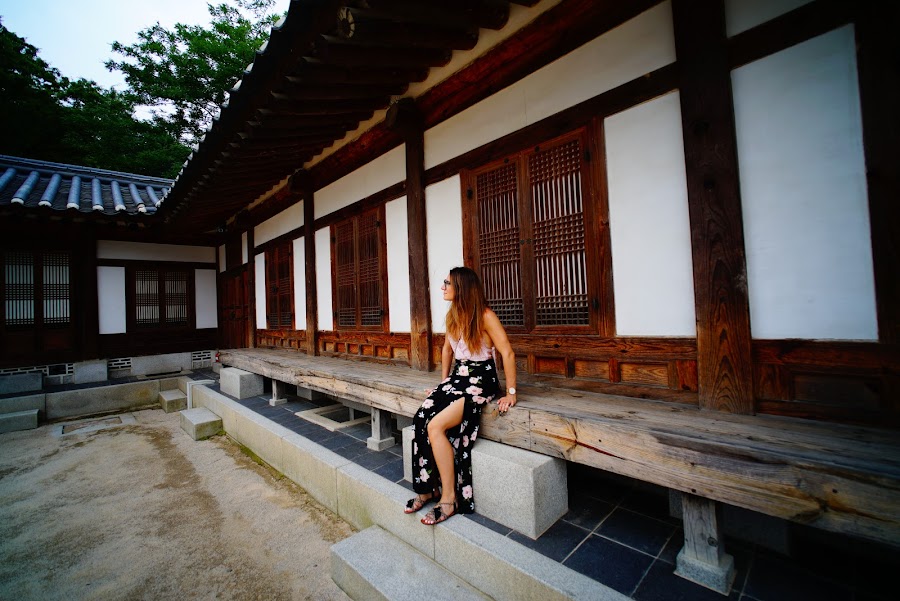
Reflecting on her sad story
The story of Gyeonbokgung
While Gyeonbokgung「경복궁」construction started in 1395, it was finished and then burnt down by the invading Japanese in 1592 that occupied Korea during 6 years. At the time, they aimed to take over China, Korea being a mere stepping stone. Ming China sent troops in 1593, that together with the Korean resistance managed to kick the Japanese back to their island.
The fire in 1592 forced the Royal Family to reallocate to the beautiful Changdeokgung, which is located east of this site. The Gyeonbokgung site remained in ruins for the following 300 years, during which Korea became increasingly a "hermit kingdom" as a way to protect themselves from the Manchurian invasions.
In 1867, king Daewongun decided to restore its grandeur. The most expensive project of the whole Joseon period involved 7.5 years of work, to build 330 buildings which were occupied 3000 staff,up to 140 eunuchs and the Royal Family. Gyeongbokgung again became an iconic symbol for both the Korean nation and the Korean royal family.
The site captured in pictures below is actually a reconstruction of that period.
The story of Queen Min (aka Empress Myeonseong)
Daewongun had a son, Gojong and a wife, Yeoheung. She decided to marry Gojong with a daughter of the Min clan, Lady Min. Daewongun remarked that Min was a "woman of great determination and poise", while he was slightly disturbed by her, her marriage to his son Gojong in 1866 was approved, unknowingly creating Daewongun's greatest political rival.
Unlike other queens preceding her, the new queen consort was an assertive and ambitious woman. She did not participate in lavish parties, rarely commissioned extravagant fashions from the royal ateliers, and almost never hosted afternoon tea parties with the various princesses of the royal family or powerful aristocratic ladies unless politics required her to do so. While she was expected to act as an icon for Korea's high society, the queen rejected this role. She devoted time to reading books generally reserved for men and furthered her own education in history, science, politics, philosophy and religion.
Daewongun took over a country in ruins but had a clear way forward to keep Korea as a hermit country:
- "crush the old ruling faction that had virtually usurped the sovereign power of the kings earlier in the century"
- "no treaties, no trade, no Catholics, no West, and no Japan"
Daewongung decisions did not have a lasting effect, some scholars believe he was not on the right path either. When his son Gojong came of age in 1874, he took over his father. Influenced by Lady Min (aka Empress Myeongseong), Gojong "assumed the full measure of royal responsibility" and undid many of his reforms.
The end of the hermit kingdom
Japan was at the time going through the Meiji restoration「明治維新」that started in 1868 a period of enlightment. Japan ended the Tokugawa Sakoku「鎖国」 country in chains, that since 1639 had meant death penalty for foreigners entering or Japanese nationals leaving the country. Japan decided to open up, colleagues explained me back it time that it started started when the kurofune「黒船」black warship arrived to Uraga in 1853, led by Commodore Matthew C. Perry from the US Army, striking the Japanese about the superiority of Global technology leading them to accept commercial treatments and to open to Western influence.
Queen Min realized the need to follow the same path on their side. She sent people to Japan, to study Japanese westernization and its intentions for Korea. These missions unveiled that 50 years back Korean main cities felt metropolitan but in 1877, comparison against the westernized Tokyo and Osaka, rendered Seoul and Busan as vestiges of the ancient past.
Her people also met with the Chinese diplomats in Tokyo and discussed the international situation:
- Qing China falling apart
- Joseon Korea as a retarded Kingdom
- Russian Empire expanding in Asia
The Chinese (Huang Tsun-hsien) presented to the Korean delegate with a book he had written, called Korean Strategy in which he advised:
- Korea to adopt a pro-Chinese policy
- Korea to avoid of close ties with Japan
- Korea to forge an alliance with the United States, to protect against Russia
- Korea to open trade relations with Western nations and to adopting Western technology
China had tried to open but failed due to its size, but since Korea was smaller than Japan, they had a fair chance to succeed. Huang Tsun-hsien viewed Korea as a barrier to Japanese expansion into mainland Asia and suggested Korean youths be sent to China and Japan to study as well as Western teachers of technical and scientific subjects be invited to Korea.
Queen Min took special interest on this advice and shared to all the ministers, hoping they would agree. But the ministers were also yangban who opposed opening the country to the West, fearing the destruction of social order and their priviledges.
Queen Min ignored this and continued to execute in the shadows:
- A larger team was sent to Japan (1881) to observe Japanese government offices, constitution, factories, military and business practices.
- The government was reformed. New bureaus to deal with foreign relations (West, China, Japan), to reform commerce, military and technology.
- Top students were sent to study new military techniques to China.
- A special mission was sent to the US (1883) confirming the need to "to further modernize this still ancient kingdom"
- The Royal English school (teaching only with English books) and Ewha Women's University (allowing women to formally pursue academic studies) were established (1886)
- Hangeul - the Korean simplified alphabet commissioned by King Sejong back in 1443 but opposed by the confucianist elites, was adopted by official documents and newspapers (instead of hanja, which uses Chinese characters) in 1894
The tragedy of the red peony
While all these reforms driven by Queen Min were putting Korea on the right path, they faced opposition both from Japan and the ruling classes, starting from her father in law, Daewongun.
In 1895, Japanese officials in Korea the plot to remove her was finalized, driven by Miura Gorō, the Japanese advisor to the Korean government, and Sugimura Fukashi, a secretary of the Japanese legation. The two decided to involve the Daewongun in the plot. He accepted, as he was "indignant enough to plan a coup". Japanese policemen escorted Daewongun to the palace the day where all wa splanned to happen. His involvement remains unclear, fact is that later on that morning, Japanese agents brutally assassinated Queen Min.
The morning of October 8th 1895 the Japanese collaborated with local traitors to perpetrate the murder, named Eulmin Incident. Lieutenant Colonel Woo Beom-seon (우범선, 禹範善) and Lieutenant Colonel Yi Du-hwang (이두황, 李斗璜) were both battalion commanders in the "Hullyeondae" a Japanese trained Regiment of the Royal Guards. The 1,000 Korean soldiers of the Hullyeondae had surrounded and opened the gates of the palace, allowing them to enter the inner sanctum. Empress Myeongseong and all her court ladies were brutally assassinated, the entire building was burnt down.
While the international community condemned the incident, the 56 men charged in Japan were absolved by the Hiroshima court due to a lack of evidence.
The Japanese Colonial Rule
In October 1895, after the assassination of Empress Myeongseong by Japanese agents, Gojong left the palace and fled for refuge to Russia on February 1896. In 1897, Gojong yielded to rising pressure from both overseas and the demands of the Independence Association-led public opinion in Korea and returned to Gyeongungung (modern-day Deoksugung), where he proclaimed the founding of the short lived Korean Empire. Howeverm, the Imperial Family would never return to Gyeongbokgung.
Final note
Empress Myeongdong assassination was the beginning of the end of a unified Korea. After Japan's victories in the Sino-Japanese and Russo-Japanese Wars, Korea succumbed to Japanese colonial rule in 1910, that lasted 35 years until the Japanese surrender in August 6th 1945, when the line along parallel 38th was drawn, dividing Korea between 2 allies that won the war together despite not liking each other much, until today.
As 6th August marked the anniversary of the atomic bomb, it gives me a lot to think about. Just like when we visited Hiroshima shortly followed by Pearl Harbor, seeing the war told from a new angle made me reflect again. War crimes never justify other war crimes, it's civilians suffering regardless of side. However, it is interesting to note that things are never black or white...
Being here in Seoul, I somehow developed the impression that while Germany openly acknowledges regret over WWII related events - even if they were perpetrated by the Nazis, not the entire country - as one can cleary see in the many monuments and museums around Jewish Heritage in the country, Japan remains as the "ultimate WWII victim" from a Global perspective.
Often forgotten is the Japanese Imperial occupation, captured by "The Pacific" TV series to a certain extent and shown in the map below, with brutal events like the Nanjing Rape or the sad legacy of comfort women. Depending on which historians you decide to trust, numbers are not that far between the Asian Holocaust and the Nazi Holocaust.
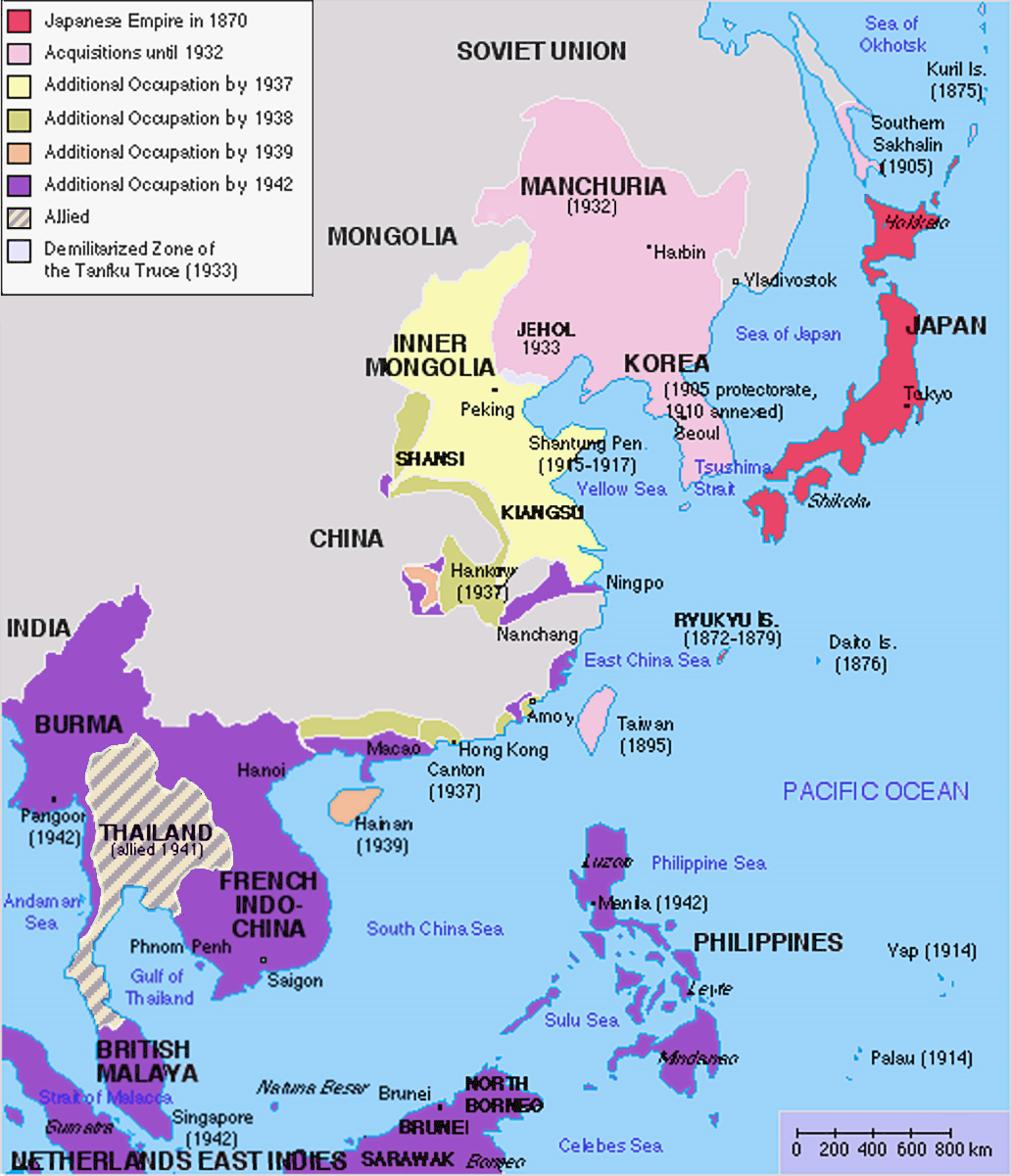
During WWII, the Japanese abducted women from their homes or lured them with promises of work in factories or restaurants. Once recruited, they were incarcerated in comfort stations, both in their nations and abroad. The number of ianfu「慰安婦」- euphemism for prostitute - is still discussed today, numbers ranging from as low as 20000 or as high as 4000000, depending on whether you trust Japanese or Chinese historians. Most of them originated from occupied countries (Korea, China, Philippines) and were deployed in for military "comfort stations" in Burma, Thailand, Vietnam, Malaysia, Taiwan (then a Japanese dependency), Indonesia (then the Dutch East Indies), East Timor, Japan, China, the Philippines, Thailand, Burma, New Guinea, Hong Kong, Macau and French Indochina (Vietnam, Cambodia, Laos).
Over the period of six weeks starting on December 13, 1937, soldiers of the Imperial Japanese Army occupied Nanjing murdered Chinese civilians and disarmed combatants (again unclear number of casualities, ranging from 40,000 to over 300,000) and perpetrated widespread rape and looting, you can read about further brutal details I don't feel like writing about.
History is never black or white...

The main gate, Gwanghwamun is this striking structure where the main road cutting across Seoul starts from.

It is possible to rent a Hanbok, traditional Korean costume in many stores nearby, you get it for free!

A random gentleman took this picture for us, the lake west of the throne room is really pretty.

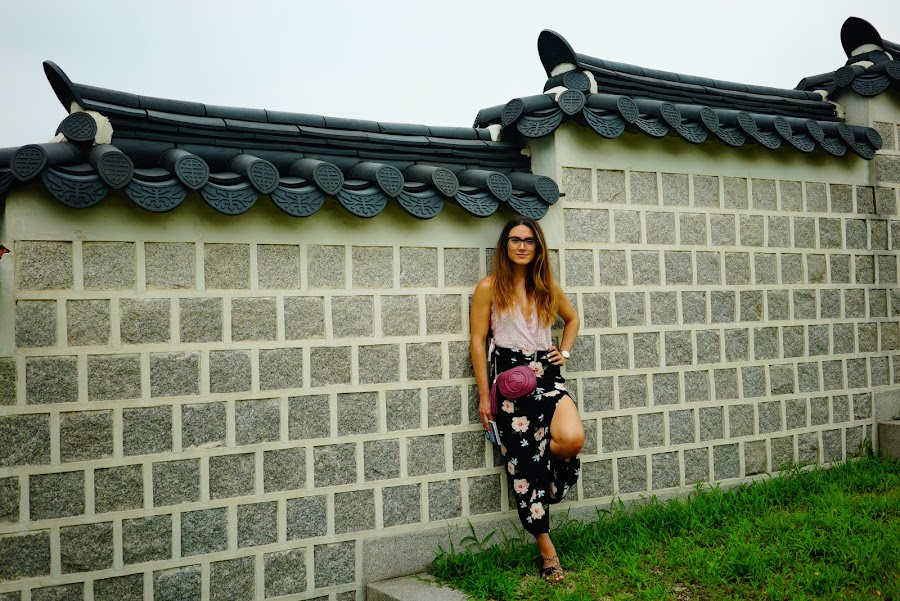
Reading in the Library, Empress Myeongdong style.


The hexagonal tower of the library has a unique style in the whole area.
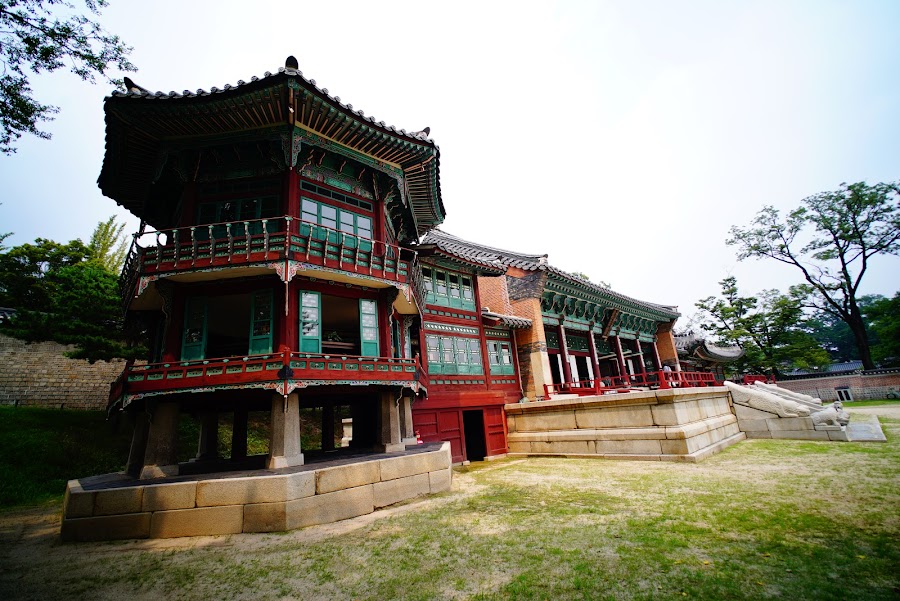
I love the geometric patterns drawn with careful brick placement, near the "birth room".

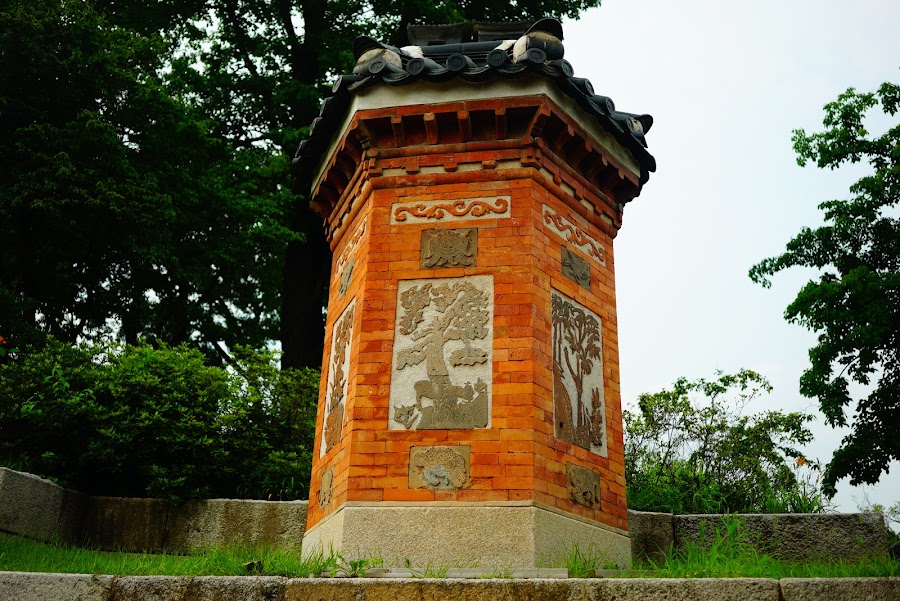
Korean students wearing hanbok while practising English with tourists...

...kimchi!






















No comments
Post a Comment